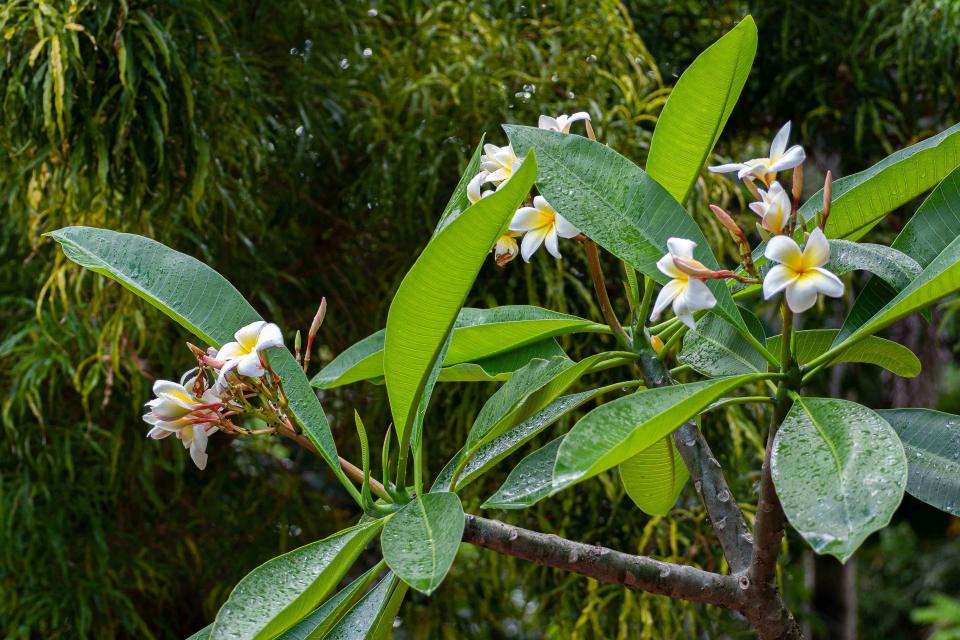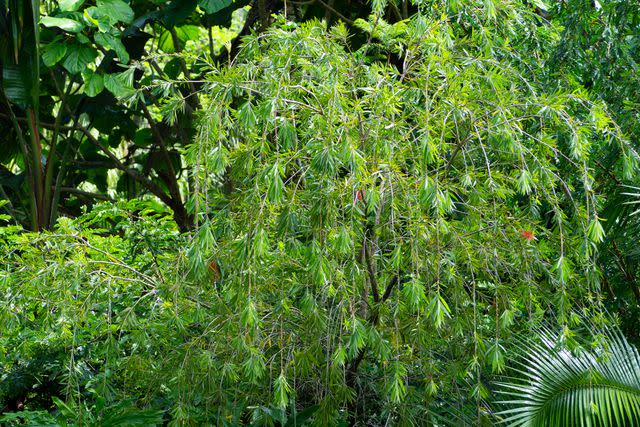From Fragrant Magnolias To Colorful Plumerias, A Guide To Flowering Trees In Florida
How to choose the best flowering trees for your Florida landscape.

Southern Living
PlumeriaLooking to elevate your Florida landscape game? Consider adding stunning flowering trees to provide shade, height, fragrance, and a pop of color to make your yard the standout of the neighborhood. While they take longer to grow than smaller floral plants, flowering trees in Florida can make a bold statement year-round in your outdoor oasis.
With such a diverse range of native and ornamental flowering trees in Florida, which ones should you choose? We turned to Betty Morrell, a gardening expert and spokesperson for Southern Living Plant Collection, who shares her best advice for successfully growing flowering trees in Florida and the benefits of adding these beauties to your landscape.
Meet the Expert
Betty Morrell is a gardening expert and spokesperson for the Southern Living Plant Collection.
Examples of Flowering Trees in Florida
Morrell points out the variety of native flowering trees in Florida’s landscape, including Loblolly-bay, Southern Magnolia, Simpson’s Stopper, Chickasaw Plum, and Carolina Cherry Laurel. “Some flowering trees, like the popular dogwood, thrive in northern and central Florida but can’t handle the more intense heat of the state’s southern reaches,” says Morrell.
Tip
Look to the University of Florida’s Extension as an excellent resource for flowering tree characteristics such as size, flower description, and blooming dates. For example, check out this helpful fact sheet to identify trees in your landscape and whether they’re native or potentially invasive.
Benefits of Flowering Trees in Florida
Why should Florida gardeners consider adding flowering trees to their landscape? For starters, flowering trees can add color and a sense of seasonality in a primarily green environment, says Morrell. “Blooms will attract pollinators, and some will attract birds, such as the lovely white flowers of the native Fringe Tree,” she says. Are you looking to add fragrance to your home environment? Choose certain varieties of trees known for their captivating scents, such as the sweet-scented blooms of the magnificent Southern Magnolia.

Southern Living/Adrienne Legault
Fringe treeAnd don’t dismay if you don’t have a big yard. If you’re short on space, Morrell suggests planting flowering shrubs like camellias, which can reach tree-like heights of up to 8’-12’ and be pruned into a canopy tree form. “An ideal variety to try is Early Wonder® Camellia, with lavender-rose blooms, hardy to Zone 9b, or ‘Yuletide’ Camellia, with its brilliant red blooms and Zone 10b hardiness,” she says.
Tips for Planning and Maintaining Flowering Trees in Your Florida Landscape
When planning your landscape, you need to consider various factors, such as planting zone, the color of your home’s exterior, and available space, advises Morrell. To ensure your flowering trees thrive in Florida’s hot, humid climate, check your appropriate USDA Planting Zone to help you identify which trees you should consider purchasing for your region. Florida planting zones range from USDA Zones 8a to 11b, which can prove challenging with its zone’s unique climate, seasons, and soil. Above all, says Morrell, landscaping in the Sunshine State means selecting low-maintenance plants that can withstand the heat and humidity of summer.
Once you identify the appropriate flowering tree for your area, consider how the shade of the blooms will look against the backdrop of your home. Morrell suggests selecting a flower color that contrasts with your home’s exterior for maximum curb appeal. “Some reliable color pairings include pink or white blooms against a gray house, purple against a brick house, and red against a deep blue house,” Morrell says. She suggests evaluating the open areas in your lawn that could use an accent tree or groupings of trees and determine the appropriate size. Read the plant’s tag to see how wide and tall the tree will be at its mature size and allow space in your landscape plan for that.

Southern Living
BottlebrushIf you live in coastal areas instead of inland, Morrell says you might need to look for salt-tolerant flowering plants such as Plumeria or Bottlebrush. “One tree that shows improved resistance to hurricane winds and salt and seawater is the Southern Magnolia,” she says.
Finally, consider the change of seasons—yes, even in a temperate, tropical climate like Florida! When your landscape plan includes four-season blooms, it helps Florida feel more seasonal. Morrell advises starting with trees that will flower in early spring (such as the Chickasaw Plum or Golden Trumpet Tree) and follow with spring-to-summer bloomers (like 'Stellar Ruby' Magnolia). Next, consider a summer-to-fall bloomer such as 'Sweet Tea' Gordlinia. Finally, adding a winter bloomer like Carolina Cherry Laurel will add some interest with its fluffy, fragrant flowers.
Where to Plant Flowering Trees in Florida
When it comes to designing a well-thought-out landscape plan, get creative when incorporating flowering trees. You can use them in many ways to enhance the landscape and pair beautifully with traditional Floridian plants, suggests Morrell. For example, consider lining a long driveway, grouping several flowering trees to balance a large shade tree, or adding a pop of color to the understory of a tall tree with a small flowering one.
Florida’s unique climate means many people take advantage of a true outdoor lifestyle, from backyard barbecues to pool parties to gracious garden “living rooms.” Flowering trees offer a beautiful backdrop for these outdoor living spaces. By considering the appropriate varieties, planning for four-season blooms, and using creative landscaping techniques, you can create a stunning and low-maintenance garden all year long.
For more Southern Living news, make sure to sign up for our newsletter!
Read the original article on Southern Living.

